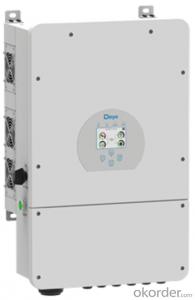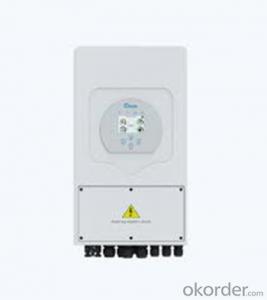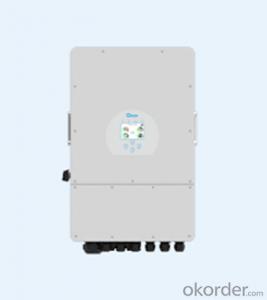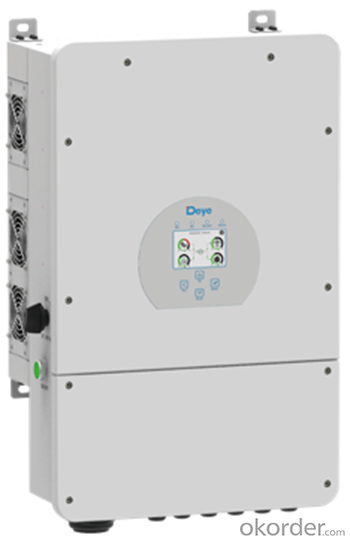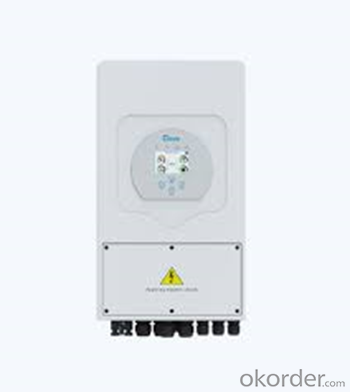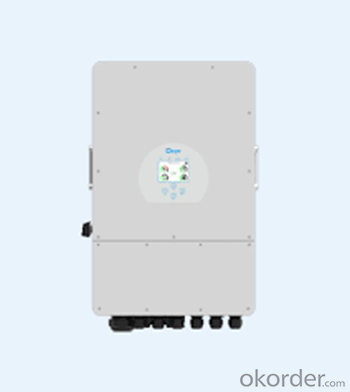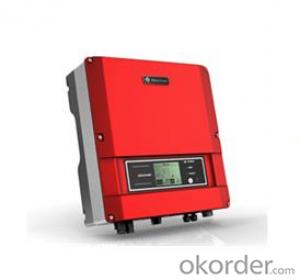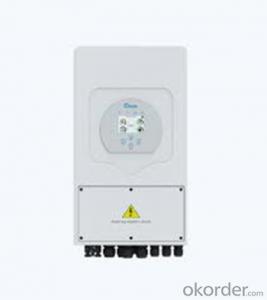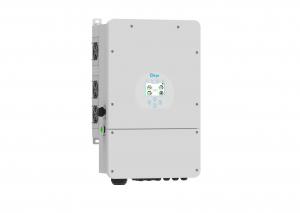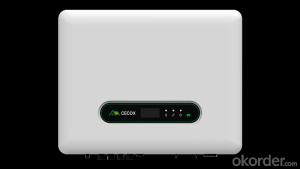Fox Solar Inverter - Deye Factory Price 48V 8KW Hybrid Solar Inverter with UL Certificates
- Loading Port:
- Stock in Panama
- Payment Terms:
- TT OR LC
- Min Order Qty:
- 10 pc
- Supply Capability:
- 5000 pc/month
OKorder Service Pledge
OKorder Financial Service
You Might Also Like
Specification
Specification
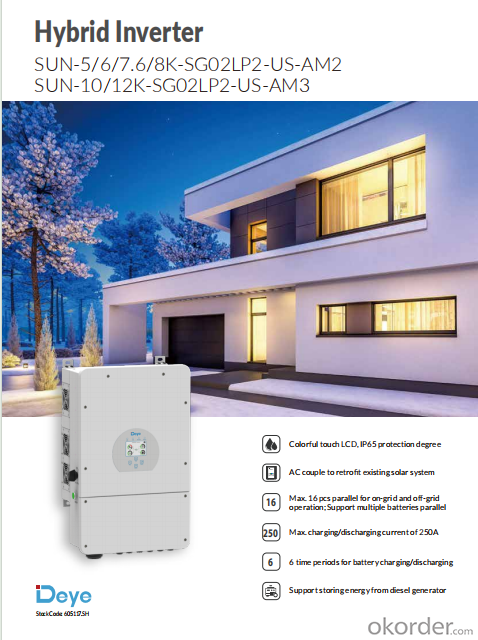
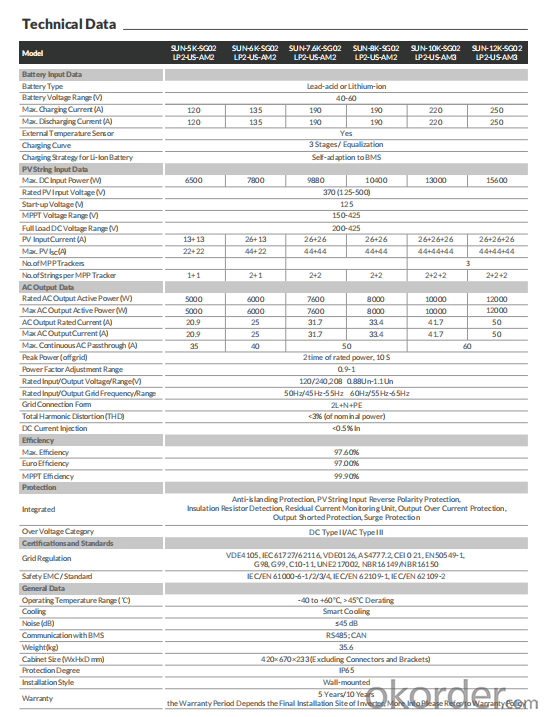
Company presentation

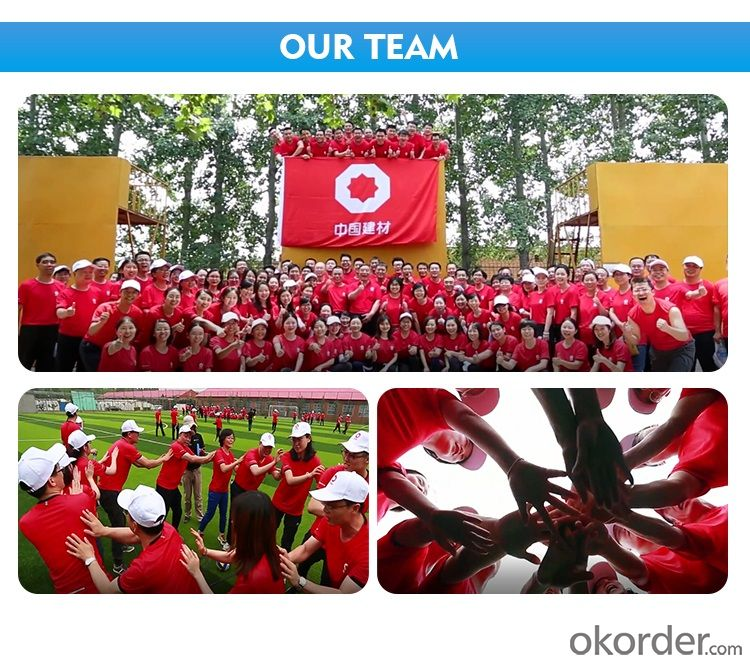
RFQ
Q: Do you have CE?A: Yes, our products are approved by CE.Q: Is OEM &ODM available in your factory ?A: Yes, you just offer us necessary documents and then we will produce the products as your requirements.Q: What is your Packing details?A: 1.Wooden case or carton package,standard export packages2.All of the productions are inspected carefully by QC before delivery.Q: What is your Delivery time?A: Usually, we make merchandise inventory. If we have the products in stock, the delivery time is 5-10 days after receiving the deposit; If we don’t have the products in stock, we will arrange the production right now. The delivery time will be 10-30 days. It depends on the quantity of order.Q:Why choose us?A: 1. Ready To Ship 2. Sample Available 3. One-Stop Service 4. Online customization5. Many years' experiences of manufacturing and service available in 24hours
- Q: Are there any government regulations or certifications for solar inverters?
- Yes, there are government regulations and certifications for solar inverters. These regulations vary by country and region, but typically involve safety standards, grid compatibility requirements, and product testing procedures. Additionally, various certifications such as UL, IEC, and CE are commonly required to ensure the quality and reliability of solar inverters in the market.
- Q: What are the safety measures to consider when installing a solar inverter?
- When installing a solar inverter, several safety measures should be considered. Firstly, it is important to ensure that the installation is performed by a qualified and certified professional to minimize the risk of accidents. It is crucial to follow the manufacturer's guidelines and recommendations during the installation process. Additionally, it is essential to disconnect the solar inverter from the power source before starting any installation or maintenance work to prevent electrocution. Proper grounding and wiring techniques should be followed to reduce the risk of electric shock or fire hazards. Adequate ventilation and temperature control should be provided to prevent overheating of the inverter. Regular inspections and maintenance checks should be conducted to ensure the inverter's safe and efficient operation. Overall, prioritizing safety measures during the installation process is crucial to protect both the installer and the system's end-users.
- Q: How does a solar inverter handle anti-islanding protection?
- A solar inverter handles anti-islanding protection by constantly monitoring the grid voltage. If the grid goes down or voltage drops below a certain threshold, the inverter automatically disconnects from the grid to prevent feeding power back into the grid during an outage. This ensures the safety of utility workers and prevents damage to the grid.
- Q: What is the maximum DC voltage that a solar inverter can handle?
- The maximum DC voltage that a solar inverter can handle varies depending on the specific model and design. However, in general, most solar inverters can handle DC voltages up to 1000V or higher. It is important to consult the manufacturer's specifications to determine the maximum DC voltage capacity of a particular solar inverter.
- Q: How does a solar inverter handle temperature variations?
- A solar inverter handles temperature variations by employing various cooling mechanisms such as heat sinks, fans, or liquid cooling systems. These components help dissipate excess heat generated during operation, ensuring the inverter remains within its optimal temperature range. Additionally, advanced inverters are equipped with temperature sensors that continuously monitor the internal temperature and adjust the system's performance to maintain efficiency and protect against overheating.
- Q: Can a solar inverter be used with different solar panel brands?
- Yes, a solar inverter can be used with different solar panel brands as long as they are compatible in terms of voltage, current, and power ratings. The inverter should support the specific voltage and power requirements of the solar panels for optimal performance and efficiency.
- Q: How does a solar inverter communicate with other devices?
- A solar inverter typically communicates with other devices through wired or wireless connections. It can use protocols like Modbus, RS485, or Ethernet to establish communication with monitoring systems, smart meters, or other devices. This allows for data exchange, control signals, and monitoring capabilities, enabling efficient management and integration of the solar power system with other components of a renewable energy infrastructure.
- Q: How does the maximum AC current rating affect the performance of a solar inverter?
- The maximum AC current rating of a solar inverter determines its capacity to handle and convert the DC power generated by solar panels into usable AC power for the electrical grid. A higher maximum AC current rating allows the inverter to handle larger amounts of power, enabling it to support more solar panels or higher power output. This ensures efficient and uninterrupted performance of the solar inverter, allowing it to meet the energy demands of the system and maximize solar energy production.
- Q: Can a solar inverter be repaired or replaced if it malfunctions?
- Yes, a solar inverter can be repaired or replaced if it malfunctions. In many cases, minor issues can be resolved through repairs, such as replacing faulty components or fixing wiring problems. However, if the malfunction is severe or the inverter is beyond repair, it may need to be replaced with a new one.
- Q: What is the role of isolation in a solar inverter?
- The role of isolation in a solar inverter is to provide electrical safety and protect sensitive electronic components. It helps to separate the direct current (DC) input from the alternating current (AC) output, ensuring that any faults or fluctuations in one do not affect the other. Isolation also prevents any potential ground faults, reducing the risk of electric shock and improving system reliability.
Send your message to us
Fox Solar Inverter - Deye Factory Price 48V 8KW Hybrid Solar Inverter with UL Certificates
- Loading Port:
- Stock in Panama
- Payment Terms:
- TT OR LC
- Min Order Qty:
- 10 pc
- Supply Capability:
- 5000 pc/month
OKorder Service Pledge
OKorder Financial Service
Similar products
Hot products
Hot Searches
Related keywords
